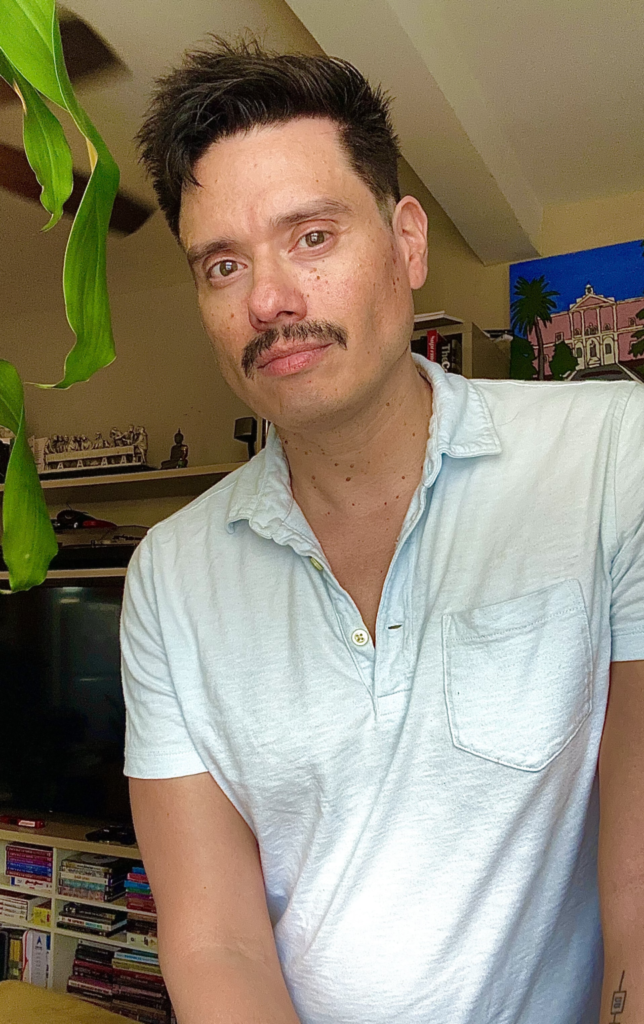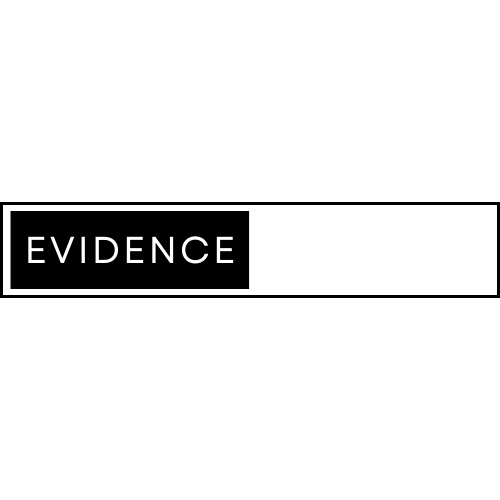Bisexual Mental Health: The need for Supportive Space for the Healing of an Underserved and Overlooked Community.
Julio J. Fonseca

“ I believe it’s important to note that my depression exists outside of my sexuality… However, it is at times worsened by the difficulty I’ve had navigating life as a bisexual person and as part of a greater community at large.”(Iovine, 2022)
In researching the mental health needs of the LGBTQ+ community, I was struck by the statistic that in the United States, as of 2022, of 7.2% of the population identified as LGBT, more than half, or 4.2% of all U.S. adults, identify as bisexual (Queer Identity was captured as “Other LBGT” in this Gallup poll) (Jones, 2023). This makes bisexual people the largest subgroup within the LGBT community. In conversation with friends, fellow colleagues, and other clinicians, many folks were surprised at the size of this number. One thing is starkly clear after researching for this article: The nuanced mental health needs of bisexual people are not being met.
Challenges Identifying the Need
While there has been a trend in recent decades for more LGBTQ+-focused research, there is an underrepresentation of research exclusive to bisexual people. Most of the research includes bisexuality under the broader umbrella of LGBTQ+ research and many times, it is generalized, missing the nuance of other dynamics of bisexual people and the full richness of their identities (Ovrebo et al., 2018, p. 169).
Another challenge in understanding the mental health needs of bisexual people is how researchers capture data. As much as language evolves, it can still be imprecise in capturing specific experiences or, in the case of research, data (Movement Advancement Project, 2016, p. 4). Some people experience attraction to or have had sexual contact with more than one gender who do not identify as bisexual, with research demonstrating similarities and differences among this group of people and those who identify as bisexual (Movement Advancement Project, 2016, p. 2).
The emergence of queer as an identity can encompass many aspects of identity, such as gay, bisexual, pansexual, or transgender, and if research design and data collection do not offer multiple ways of identifying, only a part of the identity is reflected in the results muddling what community needs and effective informed interventions (San Francisco Human Rights Campaign, 2019 p. iii). As referenced earlier, Gallup’s poll identifying bisexual people as the largest LBTQ+ group captured people who volunteered identities of queer, same-gender-loving, and pansexual as “other LGBT” by reviewers.
The Impact of Bisexual Invisibility and Bi-Erasure
The issues go much deeper than science and research, and in the ways that systemic oppression runs very deep into the history of society, so does the experience of the bisexual identity. Societal norms around heterosexuality and lived experiences of queerness can invalidate bisexuality. The notion of bisexuality as a “phase” to a gay or lesbian orientation is perpetuated in both straight and queer communities and devalues a bisexual person’s experiences (San Francisco Human Rights Campaign, 2011, p. 3). The notion of the double closet for Bi people and a level of discomfort in both queer and straight spaces. Queer people assume that bisexual people experience “straight” or “straight-passing” privilege when a bi person is in an opposite-sex relationship, further adding to the marginalization of the bisexual community within multiple communities. It is unsurprising, given these experiences, that bisexual people are less likely to disclose their orientation than their gay and lesbian counterparts (Chan et al., 2020, p. 293). There is evidence supporting evidence supporting sexual orientation concealment as a factor that may also help to explain the mental health disparities between gay/lesbian and bisexual individuals (Chan et al., 2020, p. 298)
Bisexual people also must contend with Bi-Erasure, which often can occur when they are in a non-mono-sexual relationship where people assume their straightness as a default. This has impacts not only on the interpersonal relationships that bisexual people may experience with friends and family, but it can also impact their relationships if their partner is not bisexual. Healthcare providers may make assumptions regarding their orientation that then completely neglect other healthcare needs as a person who has needs (Stewart, 2019). Meyer’s work on Minority Stress in LGB populations posits that sexual prejudice is stressful and impacts communities in the form of adverse mental health outcomes (Meyer, 2003, p. 5).
Bisexual Mental Health: Prevalence and Needs
What are the impacts of these experiences on bisexual people’s mental health? Within the last decade, there has been emerging bi-specific research that demonstrates bisexual people’s needs. Bisexual people face a higher risk of encountering mental health challenges, substance abuse issues, and sexual health concerns, partly because of the stigma and discrimination they experience. Lifetime rates of mood/anxiety disorders for bisexual men were higher, 36.9% for mood and 38.7% for anxiety, than heterosexual men, 19.8% for mood and 18.6% for anxiety. Rates were similar to those of gay men: 42.3% for mood disorders and 41.2% for anxiety disorders. For bisexual women, lifetime rates of mood/anxiety disorders were higher, 58.7% for mood and 57.8% for anxiety, compared to rates of 44.4% for mood, and 40.8% anxiety among lesbians, and 30.5% mood, 31.3% anxiety among heterosexual women (Feinstein & Dyar, 2017, p. 3).
Bisexual people are also at increased risk for substance and alcohol use/disorders compared to monosexual people. Bisexual women reported higher instances of heavy drinking (25.0%), marijuana use (22.2%), and use of other drugs (14.1%) compared to lesbian (20.1% for heavy drinking, 16.7% for marijuana, and 12.6% for other drugs) and heterosexual women (8.4% for heavy drinking, 2.6% for marijuana, and 3.1% for other drugs). Additionally, alcohol dependence was more prevalent among bisexual women (15.6%) than among lesbians (13.3%) and heterosexual women (2.5%). Among men, those who identified as bisexual experienced higher rates of alcohol dependence (19.5%) and other drug use/dependence (17.7% for other drug use, 5.1% for drug dependence) compared to heterosexual men (6.1% for alcohol dependence, 4.5% for other drug use, 0.5% for drug dependence). Rates for bisexual men were similar to those for gay men (16.8% for both alcohol dependence and other drug use, 3.2% for drug dependence) (Feinstein & Dyar, 2017, p. 4).
Considerations for Affirming Bisexual Identities in Research and Practice
There is a clear need for more affirming LGBTQ+-centered mental health care, but even more so for bisexual people. Opportunities to support this community are multi-fold. Understanding the need requires research dedicated specifically to bisexual identities. A standard capture and consistency of identities, such as bisexual and pansexual, and the intersections of those identities with queer identity will enrich data supporting identity-specific interventions (Hutchins, 2018, p. 540).
In the training of emerging clinicians, instructors can highlight ways to understand the mental health needs of bisexual people and the gaps in data. A curriculum that addresses bisexual studies with community input and involvement can help train clinicians to understand first-hand the needs of identities that are non-monosexual (Hutchins, 2018, p. 540).
Practicing clinicians collaborating with bisexual people should ensure interventions should attend to all the intersections of the patient’s identity. Clinicians can create affirming space by familiarizing themselves with the stressors that impact bisexual people and deepen their understanding of bisexual-specific identity stress. Therapists collaborating with bisexual clients should foster an alliance that validates their identity and demonstrates respect for the dynamic nature of sexuality (Chan et al., 2020, p. 299).
Additionally, another potential avenue for creating not only a bisexual-affirming space but also a community is group therapy. While research on group therapy in LGBTQ+ communities is still emerging, there is promising recent research on group therapy’s role in treating internalized homophobia in gay men (Heilman, 2018). Group therapy created by bisexual providers for bisexual patients offers a unique opportunity to understand the needs of communities and to ensure that interventions are affirming and culturally humble. Group therapy offers an opportunity to create more space for bisexual people to process aspects of their shared experience in an affirming space that can be a starting point for connection and healing. With a commitment to affirming research, community involvement, and dedication to learning more about the gaps, in services and care, clinicians can be at the forefront of solutions to meet these needs in a safe and unique space.
References
Chan, R. C. H., Operario, D., & Mak, W. W. S. (2020). Bisexual individuals are at greater risk of poor mental health than lesbians and gay men: The mediating role of sexual identity stress at multiple levels. Journal of Affective Disorders, 260, 292–301. https://doi.org/10.1016/j.jad.2019.09.020
Feinstein, B. A., & Dyar, C. (2017). Bisexuality, Minority Stress, and Health. Current Sexual Health Reports, 9(1), 42–49. https://doi.org/10.1007/s11930-017-0096-3
Hutchins, L. (2018). Bisexuality: Theories, Research, and Recommendations for the Invisible Sexuality, by D. Joye Swan and Shani Habibi. Journal of Bisexuality, 18(4), 539–542. https://doi.org/10.1080/15299716.2018.1504964
Iovine, A. (2022). Being bisexual can impact your mental health. Here’s what you can do about it. Mashable.Com. https://mashable.com/article/bisexual-mental-health-bi-awareness-week
Jones, J. M. (2023). U.S. LGBT Identification Steady at 7.2%.pdf. Retrieved from https://news.gallup.com/poll/470708/lgbt-identification-steady.aspx
Meyer, I. H. (2003). Prejudice, Social Stress, and Mental Health in Lesbian, Gay, and Bisexual Populations: Conceptual Issues and Research Evidence. Psychological Bulletin, 129(5), 674–697. https://doi.org/10.1037/0033-2909.129.5.674
Movement Advancement Project (2016). Invisible Majority: The Disparities Facing Bisexual People and How to Remedy Them. https://www.lgbtmap.org/policy-and-issue-analysis/invisible-majority
Ovrebo, E., Brown, E. L., Emery, H. E., Stenersen, M., Schimmel-Bristow, A., & Steinruck, R. E. (2018). Bisexual Invisibility in Trauma: PTSD Symptomology, and Mental Healthcare Experiences Among Bisexual Women and Men versus Lesbians and Gay Men. Journal of Bisexuality, 18(2), 168–185. https://doi.org/10.1080/15299716.2018.1458682
San Francisco Human Rights Campaign of Committee (2011). Bisexual Invisibility Impacts and Recommendations. https://phimc.org/resource/bisexual-invisibility-impacts-and-recommendations/
Stewart, H., Bisexual Resource Center (2019). Bisexual Microaggressions in Medical Contexts. https://biresource.org/bisexual-microaggressions-in-medical-contexts

